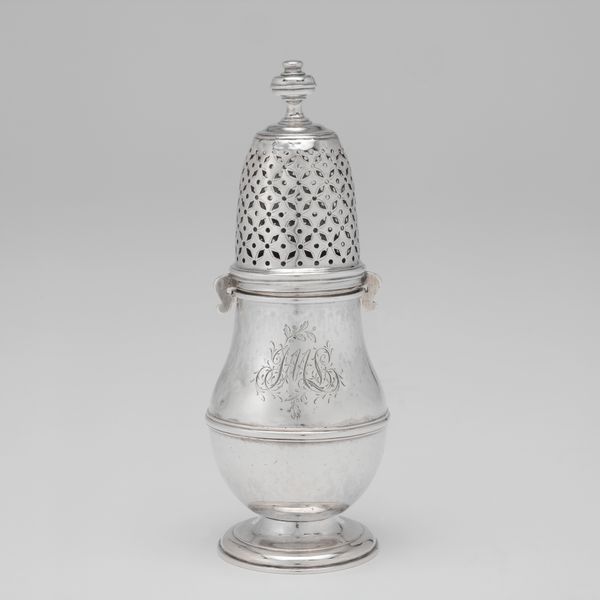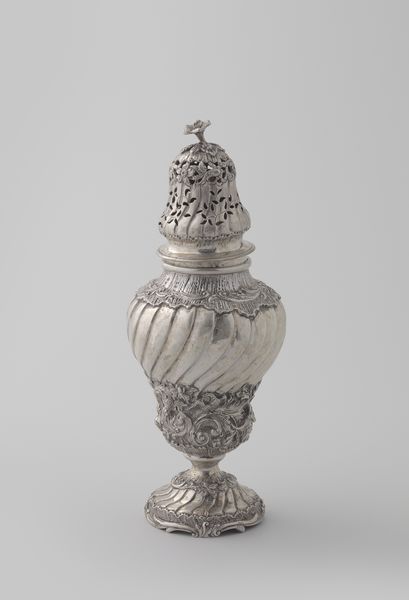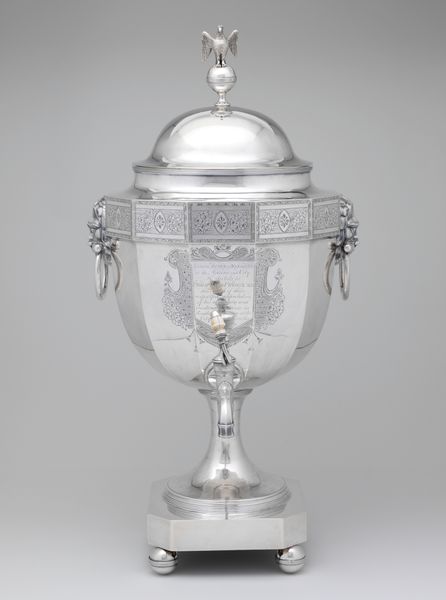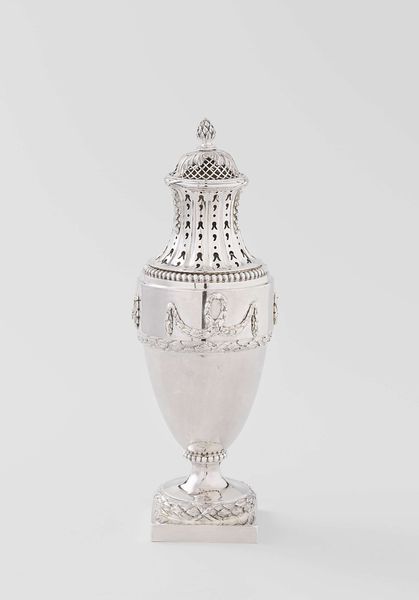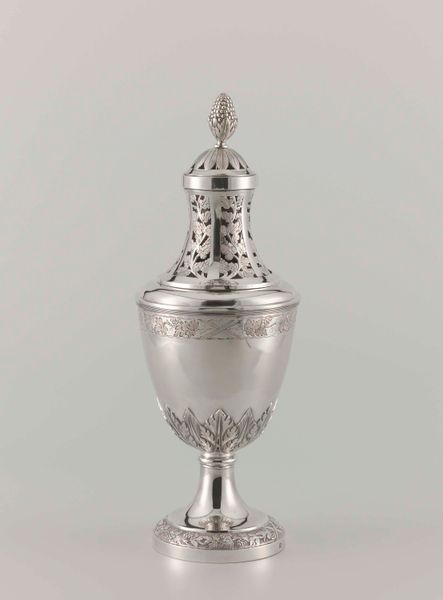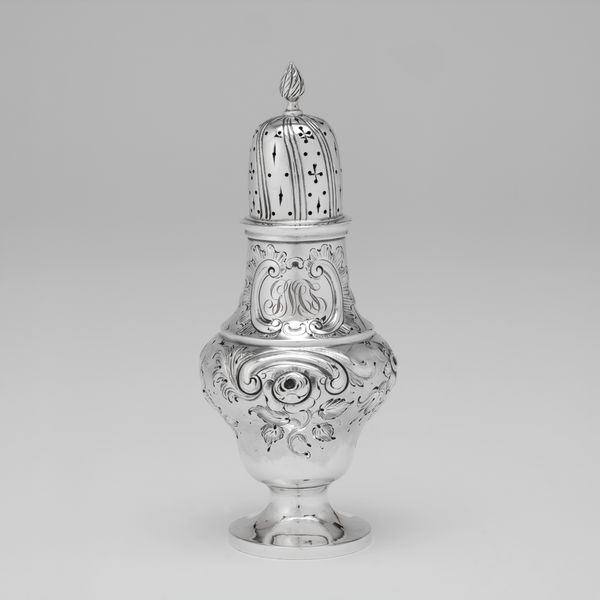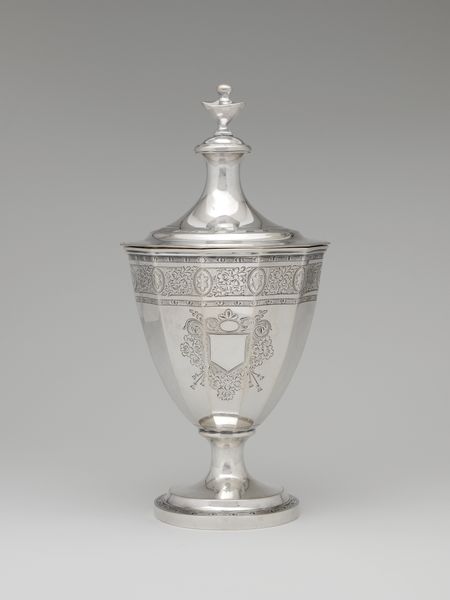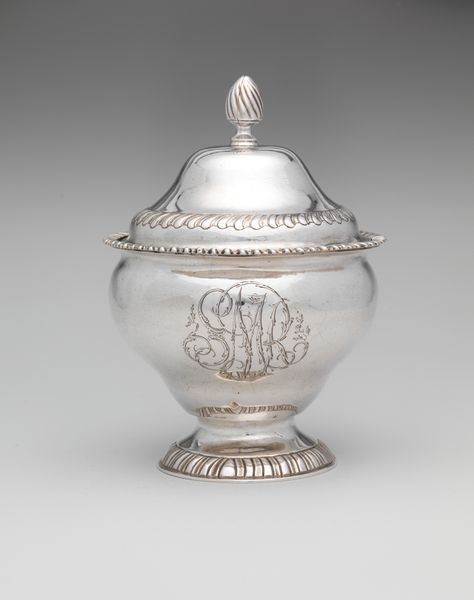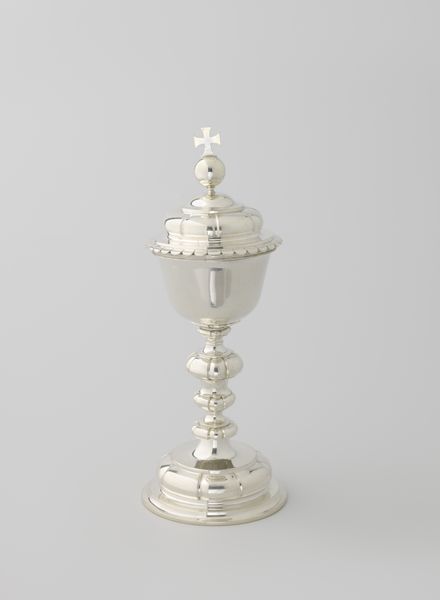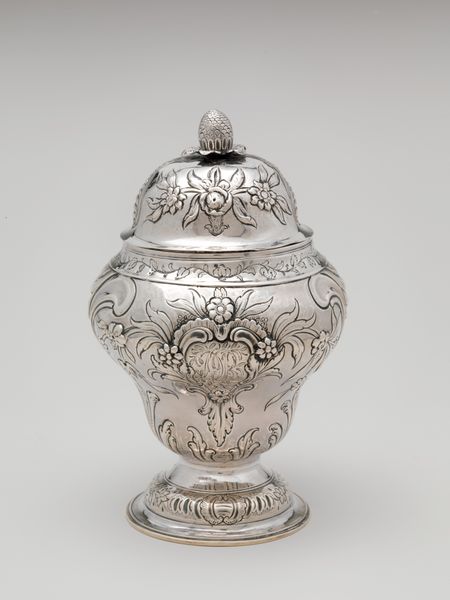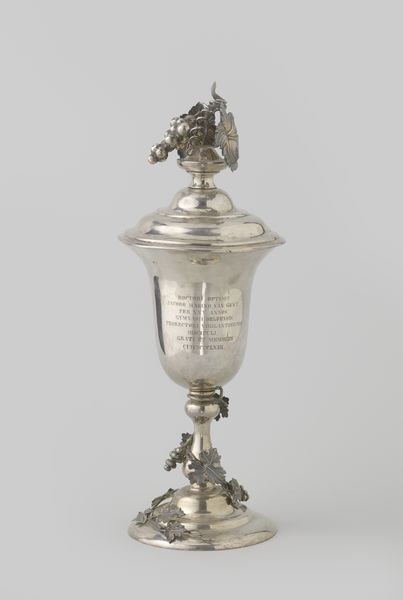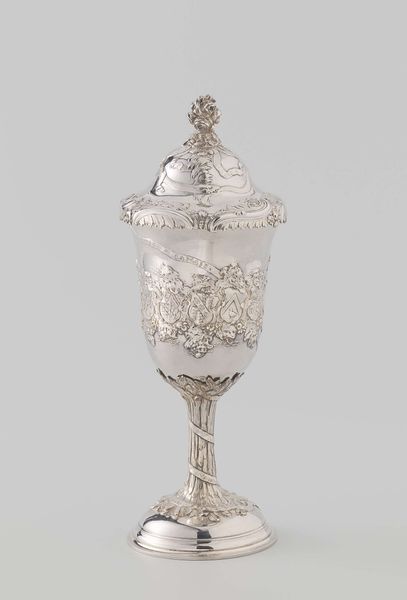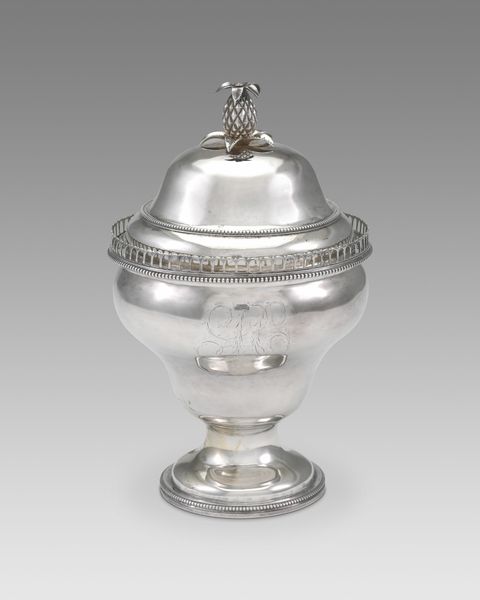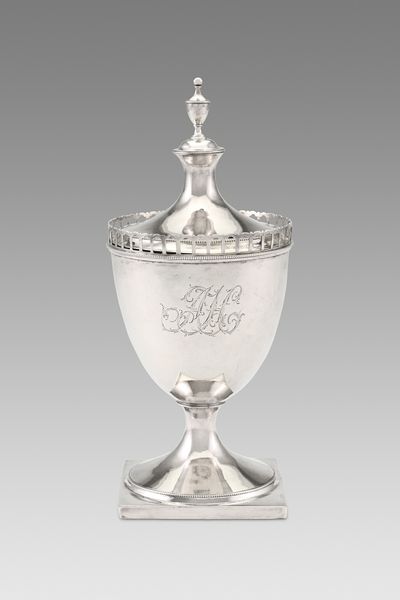
silver, metal, sculpture
#
neoclacissism
#
silver
#
metal
#
sculpture
Dimensions: Overall: 5 13/16 x 2 1/8 in. (14.8 x 5.4 cm); 3 oz. 16 dwt. (118.9 g) Foot: Diam. 2 1/8 in. (5.4 cm) Body: 3 13/16 in. (9.7 cm); 2 oz. 16 dwt. (86.7 g) Cover: 2 1/4 in. (5.7 cm); 1 oz. 1 dwt. (32.2 g)
Copyright: Public Domain
Curator: Let’s take a closer look at this Pepper Caster. It was crafted by Isaac Hutton sometime between 1797 and 1800. Made of silver, it’s an elegant example of Neoclassical design. You can currently find it on display here at the Metropolitan Museum of Art. Editor: It feels very… restrained, almost austere, doesn’t it? All that gleaming silver and perfect symmetry. I'm immediately struck by its subtle hammered texture that catches the light. Gives it a quiet shimmer. Curator: Indeed. That restraint is typical of Neoclassicism, recalling the perceived purity and simplicity of ancient Greek and Roman forms. It stands as a fascinating visual echo, mirroring values placed on order and reason during a tumultuous period of revolution and change. Silver, naturally, held cultural importance far beyond mere utility. Editor: Oh, absolutely. You can practically see it sitting on some wealthy family’s meticulously set table. The craftsmanship is so fine, it feels like an object of aspiration, but a rather *disciplined* aspiration, if that makes any sense? Like, "we value good taste, but no flashy displays." And the pierced dome – it feels so deliberate, each hole perfectly placed. Curator: Precisely! This pepper caster transforms something quotidian—a spice dispenser—into an emblem of societal values and artistic sensibilities. Even the engraved monogram speaks volumes, hinting at family legacy and permanence. Notice how it stands balanced, solid... Editor: It does seem sturdy, though that little finial on top makes me a little anxious. I'm wondering about all the missing narratives that might attach to an everyday object used by past inhabitants of that era? Its gleaming surface only throws the question into sharper relief! Curator: I agree that seemingly mundane objects become charged with symbolism and story over time. This piece embodies cultural continuity and the echoes of social rituals, but as cultural studies remind us, silver pieces carried complex weight in societies built on trade and empire. Editor: So it's a functional object loaded with symbolism, a silent witness to historical shifts… It is sort of melancholic isn’t it? To realize even something as small as a pepper caster once had someone polish it to gleam as an exercise of status! Curator: Perhaps... or perhaps a symbol of enduring values reflected in form and function! I find myself drawn to the resilience implied within its classical restraint. Editor: Yes, and I realize my initial perception of restraint masked a real commitment to beauty. So often, we focus on grand statements, forgetting that true elegance often lies in the everyday, wouldn’t you agree?
Comments
No comments
Be the first to comment and join the conversation on the ultimate creative platform.
